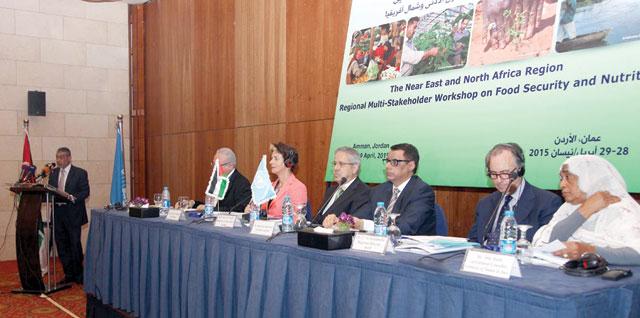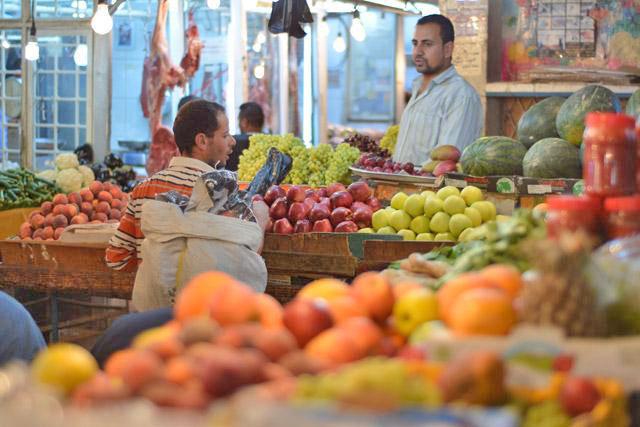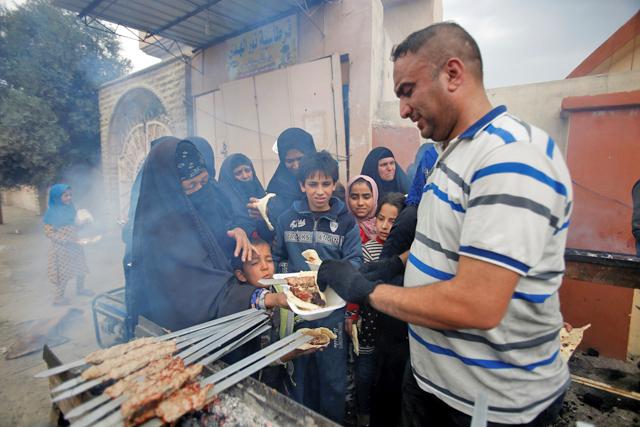You are here
Number of food insecure in region doubles in three years to reach 33m — UN
By Khetam Malkawi - Apr 28,2015 - Last updated at Apr 28,2015

AMMAN — The Near East and North Africa (NENA) region faces unprecedented challenges to food security and nutrition, especially in the countries that are now under conflict, experts and UN officials said on Tuesday.
Figures they cited showed that the number of food insecure in the region reached 33 million in 2014, more than double the figure in 2012.
“The old challenge stemming from the scarcity of water and the growing demand for food is becoming each year more stringent, with the increasing population and the changes in climate,” said Abdessalam Ould Ahmed, assistant director general and regional representative for the UN Food and Agriculture (FAO) organisation.
The region, he noted, is already using more than 80 per cent of the fresh water available for agriculture but imports more than 50 per cent of its calorie consumption, except for a few countries.
There are limited possibilities to allocate more water for agricultural production, Ould Ahmed added.
“If no major policy changes are introduced, the NENA region will grow increasingly dependent on the international market for its food needs with the consequences of high exposure to price and market shocks,” he said at the opening of an FAO regional multistakeholder workshop on food security and nutrition.
According to the UN official, the most pressing challenge to food security and nutrition in the region today comes not from the availability or even access to food “but from conflicts and protracted crises and their devastating consequences”.
Citing the FAO-WFP-IFAD State of Food Insecurity 2014, Ould Ahmed said most of the food-insecure population lives in Syria, Yemen, Iraq, Gaza and the West Bank, and Sudan.
In Syria alone 14.6 million people — 9.8 million inside Syria and 3.8 million refugees — are in need of food assistance.
In Yemen, 12 million people need aid, the FAO official noted, warning that if the protracted crises are left unaddressed, they can have long-lasting intergenerational consequences on poverty, child nutrition, health, productivity and growth.
Meanwhile, the World Food Programme (WFP) plans to extend food assistance to 24 million people in the region this year.
The target was only 6.5 million five years ago, according to Carlo Scaramella, acting regional director at the WFP regional bureau for North Africa, Middle East, Central Asia and Eastern Europe.
Food insecurity is not the only challenge facing the region, but also water scarcity, according to Wadid Erian, the Arab League representative at the meeting.
Erian noted that water deficiency in the region will reach 25 per cent this year.
To address these challenges, countries should invest more in multi-stakeholder cooperation and make the voices of all people heard, according to Gerda Verburg, chair of the UN Committee on World Food Security.
She called on countries of the region to communicate and work together and benefit from FAO and WFP expertise.
The two-day Amman meeting brings together representatives from governments, civil society, the private sector and academia to exchange information, views and analysis on food security and nutrition in the NENA region.
Related Articles
BEIRUT — Conflicts and instability are hampering the fight against hunger in the Middle East at a time when undernourishment is on the rise,
AMMAN — The prevalence of undernourishment (PoU) in Jordan rose sharply following the start of the Syrian crisis, a recent report by the Foo
AMMAN — Despite plans implemented to provide support to refugees and host communities, the national social protection strategies of the Near













